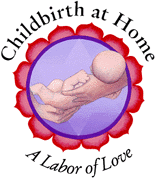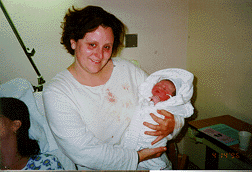


Becoming a Direct-Entry Midwife
Becoming a Certified Professional Midwife
|Becoming a California-Licensed Direct-Entry Midwife | Becoming a Certified Nurse-Midwife or Certified Midwife|Midwifery and Childbirth Related Events in CA|
--A 16th Century Midwifery Text
First, A Little Terminology:
"Direct-Entry" Midwives enter the profession without training first as nurses, unlike Certified Nurse-Midwives, who first must become nurses, and then train as a midwives. Training in both discliplines of nursing and midwifery were an asset when nurse-midwifery was in it's early years, as these public health nurses were working with poor women who had compromised health statuses that complicated their pregnancies. Direct-Entry Midwives today work in out-of-hospital birth settings such as birth centers and private homes, where the status of the women's health is good and pregnancy risk factors are low due to careful prenatal screening.
- The Certified Professional Midwife
-
For a Summary of the CPM -certification process, go to: www.narm.org/htb.htm
THE CPM
...is a direct-entry midwife who has met certification standards set forth by the North American Registry of Midwives (NARM), which oversees the evaluation and testing national certification process to become a "Certified Professional Midwife" (CPM). While obtaining this certification does not ensure legal status in every state, it does validate the midwife's competency. The NARM Exam, which is used as the regulatory examination in all states which offer direct-entry midwifery licenses validates entry-level knowledge, skills and experience vital to responsible midwifery practice. This international certification process encompasses multiple routes of entry including apprenticeship, self-study, private midwifery schools, college and university-based programs and nurse-midwifery. NARM recognizes that Competency Based Education is the optimal model for educating maternity-care providers practicing in out-of-hospital settings because it is the only model that requires clinical experience in out-of-hospital settings, continuity of care, and risk assessment skills, which are required to determine when referral, collaboration or consultation with a physician is necessary. (The guidelines for certification were developed by The Certification Task Force's Job Analysis for Direct-Entry Midwives, which was based on MANA's Core Competencies for Midwives.)
national certification process to become a "Certified Professional Midwife" (CPM). While obtaining this certification does not ensure legal status in every state, it does validate the midwife's competency. The NARM Exam, which is used as the regulatory examination in all states which offer direct-entry midwifery licenses validates entry-level knowledge, skills and experience vital to responsible midwifery practice. This international certification process encompasses multiple routes of entry including apprenticeship, self-study, private midwifery schools, college and university-based programs and nurse-midwifery. NARM recognizes that Competency Based Education is the optimal model for educating maternity-care providers practicing in out-of-hospital settings because it is the only model that requires clinical experience in out-of-hospital settings, continuity of care, and risk assessment skills, which are required to determine when referral, collaboration or consultation with a physician is necessary. (The guidelines for certification were developed by The Certification Task Force's Job Analysis for Direct-Entry Midwives, which was based on MANA's Core Competencies for Midwives.)
The Certified Professional Midwife (CPM) clearly exhibits all the required characteristics of a Competency-Based Program. Regardless of the educational pathway chosen--apprenticeship, postsecondary education, adult education, at-a-distance education, or a self-paced program--student competency attainment remains the objective.
As of March, 1999, there are more than 800 state-regulated midwives and 500 CPMs. Eventhough the numbers of out-of-hospital births in the U.S. is small, as the numbers of CPMs and state-licensed midwives increase, so will the percentages of births attended by these maternity-care providers.
To obtain information on becoming a Certified Professional Midwife, request the "CPM Certification Packet" from:
North American Registry of Midwives (NARM)
NARM has a new address for the Applications Department.Ę Please send all applications, requests for applications, and recertifications to the following address:
NARM Applications
PO Box 140508
Anchorage, AKĘ 99514
-
The Midwifery Practice Act was passed in 1993 allowing direct-entry midwives to become licensed to practice in California. The law specifies graduation from a 3-year, accredited educational institution. However, no such program existed in the state.
Seattle Midwifery School, a nationally accredited midwifery school, was approved by The Medical Board of California to develop and administer an educational challenge process, which they did for nearly ten years. This process, known as the California Challenge Process (or CCP) was in effect from 1994-2003, allowing the state's most experienced midwives to be 'grandmothered' into licensure. It also became the only mechanism by which student midwives could work towards becoming licensed. Students studied the academics of midwifery through study groups and correspondence courses, and after completing clinical requirements (through apprenticeship) could take the written and clinical examination offered by Seattle Midwifery School; and then take the Medical Board's Licensing Examination, to obatin licenses to practice midwifery. This avenue for licensure ended in mid-2003.
Seattle Midwifery School has closed the California Challenge Process. ĘThey have encouraged other MEAC accredited midwifery programs to apply to The Medical Board of California for approval.
The National Midwifery Institute has been approved by The Medical Board of California, which means that upon completion of this 3-year program, graduates may take the Medical Board Midwifery Licensing Examination to obtain licenses to practice in California. The Midwifery Institute program is a correspondence course, which can be done from your own community. Local apprenticeships must be obtained in order to gain clinical experience. In addition, Seattle Midwifery School and Maternidad de Luz are approved midwifery programs.
There is no provision for advanced midwifery students or practicing, primary midwives who wish to obtain licensure to test out of the school and state's academic requirements at this time. However, Seattle Midwifery School does allow students with prior experience to test out of some of their program's coursework, reducing fees and length of program. Contact Seattle Midwifery School for more information.
For a national listing midwifery programs, go to: socalbirth.org/pathways/study.htm or Midwifery Education Accredidiation Council's list of midwifery programs.
The Kalman Memorial Midwifery Education Fund
The California Association of Midwives' Midwifery Childbirth Awareness Project (CAM-MCAP) administers The Kalman Memorial Midwifery Education Fund which provides small grants ($50 to $200) to offset testing and licensing fees, as well as help students with purchasing educational materials such as study guides, and tuition for midwifery programs, workshops and conferences. To apply, please contact The California Association of Midwives Childbirth Awareness Project at 800-829-5791.
Answers to your questions about midwifery practice or licensing issues can be directed to:
California Association of Midwives
c/o Carrie Sparrevohn, LM
436 I St.
Davis, CA 95616
or email her at:
Phone: 530-750-2220
Fax: 530-757-7434
If you are interested in becoming licensed, contact:
Terri Kizer
Medical Board of California
Midwifery Licensing Program
1426 Howe Ave., Ste.88
Sacramento, CA 95825
916-263-2393 or 916-263-2496
ARE THERE OTHER MIDWIFERY CERTIFCATIONS?
Yes. The American College of Nurse Midwives(ACNM) Certification Council administers certification for Certified Nurse Midwives (CNMs) and Certified Midwives (CMs). These credentials are designed to prepare CNMs and CMs as primary-care providers for hospital and clinic-based practice settings. The ACC considers a university-based master-level education the optimal model for training CNMs and CMs. Currently, there are only eleven CMs in the U.S., based in the state of N.Y. The difference between a CNM and a CM is that CMs are not required to become nurses first. For more information, please go to the ACNM website.
and because there is only one you in all time, this expression is unique.
And if you block it, it will never exist through any other medium and be lost. The world will not have it.
It is not your business to determine how good it is:
nor how valuable it is;
nor how it compares with other expressions.
It is your business to keep the channel open.
You do not even have to believe in yourself or your work.
You have to keep open and aware directly
the urges that motivate YOU.
Keep the channel open...
No artist is pleased...
There is no satisfaction whatever at any time.
There is only a queer, divine disatisfaction;
a blessed unrest
that keeps us marching
and makes us more alive than the others."
--Martha Graham to Agnes DeMille